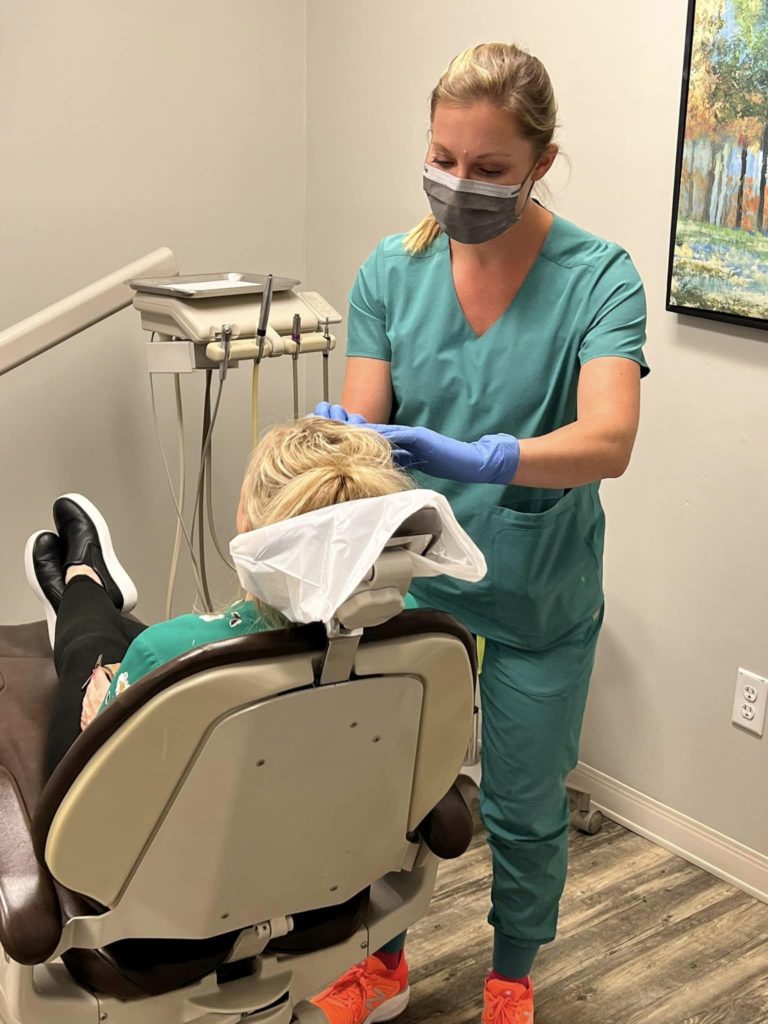How Botox Can Help Stop Chronic Jaw Pain & Headaches
August 10, 2022

Botox. When you hear that word, you probably think of a treatment whose main focus is to eliminate fine lines and wrinkles on the face, and that’s because this is the way it’s primarily used these days. However, Botox has been a go-to pain reliever in the medical world for decades. In particular, it’s often used to stop chronic jaw pain and headaches that stem from a temporomandibular joint disorder, or TMD. How does this work? Keep reading to learn how Botox might be able to provide the relief you’ve been looking for.
How Botox Helps with TMD
The reason Botox is able to smooth out facial skin is because, once injected, it causes the underlying muscles to relax. This prevents them from making the movements that force the skin to crease and wrinkle.
In a similar vein, Botox can also be injected into overactive jaw muscles. TMDs are often the result of unconscious teeth grinding and jaw clenching (also known as bruxism). This is often due to the jaw joint and teeth not lining up correctly, so the body tries to force them into the right position. As a result, the jaw muscles overwork, become tired, and eventually develop pain and strain.
With a few strategic injections of Botox, these muscles can effectively be soothed so they remain calm. Because they aren’t as engaged, the tension that is usually at the root of a TMD doesn’t happen, preventing the pain patients are familiar with.
How TMD Can Help with Headaches
One of the most underdiagnosed causes of chronic headaches/migraines is TMD. That’s because if someone is suffering from a head problem, most doctors won’t look at their jaw—unless they are a dentist! Because the head and jaw muscles are so close together, discomfort starting in the jaw can easily manifest as a headache or migraine.
Because of this, injecting Botox into the jaw muscles can often stop these types of headaches from occurring as well.
How Getting Botox for TMD Works
So who provides Botox for TMD? That answer is easy—dentists! Dentists are not only trained to be very familiar with the anatomy of the jaw and mouth, but they also have a lot of knowledge when it comes to the facial muscles as well.
This means that if you’re dealing with jaw pain or headaches, they can examine your jaw and teeth to search for the signs of TMD, and if they see anything, they may recommend injecting Botox to provide immediate relief. A few injections are all that is necessary, and after that, the soothing effect can be trusted to last for about three to four months. During that time, the dentist can provide a more robust treatment that removes the source of the TMD (such as a splint or occlusal adjustment).
There is more to Botox than meets the eye! If you’re ready to make your pain stop right away, then your next trip might need to be to a dental office.
About the Author
Dr. Shannon Duqum is a family and cosmetic dentist serving the Geneva area. She graduated from the Ohio State College of Dentistry, completed her residency at the Mercy Medical Center in Canton, and has undergone advanced training to provide Botox. She has already helped many TMD patients find relief with Botox, and she’s eager to do the same for you! To learn more about this treatment or schedule a consultation with Dr. Duqum, click here.
No Comments
No comments yet.
RSS feed for comments on this post.
Sorry, the comment form is closed at this time.
